
Paola Gonzalez
Chilean archaeologist and enviromental lawyer (Universidad de Chile). She has a broad experience in Andean archaeology, in particular, iconographic studies (ceramic designs, rock art) and legal protection of indigenous cultural heritage. Her most recent focus is the Andean and Amazonic cultural relationship, in present and prehispanic times, specifically the South American tradition of chamanic art. She leads recent scientific investigations in diaguita archaeological site of El Olivar (La Serena). Given its enormous size, occupational density and temporal depth, its study is essential for the understanding of Molle, Ánimas and Diaguita Culture. Researcher of Fondecyt Proyect from 1995 to 2020. Author of "Visual Languages of the Incas" (Archaeopress International Series N°1848, 2008), "Arte y cultura Diaguita Chilena: simetría, simbolismo e identidad" (Ucayali Ediitores, 2013), "Mining and National Monuments" (Ediarte S.A. 2005) y "Alfarería del sitio El Olivar: memoria renacida a partir de sus fragmentos" (Ucayali Editores, 2020).
less
Related Authors
Dan Hicks
University of Oxford
Henry Tantaleán
Universidad Nacional Mayor de San Marcos
Armando Marques-Guedes
UNL - New University of Lisbon
Isabel Villaseñor Alonso
Instituto Nacional de Antropología e Historia
Gary Feinman
Field Museum
Randall McGuire
Binghamton University
Leonardo García Sanjuán
Universidad de Sevilla
Muharrem Kaya
Mimar Sinan Güzel Sanatlar
Salvador Muñoz-Viñas
Universitat Politècnica de València
InterestsView All (12)
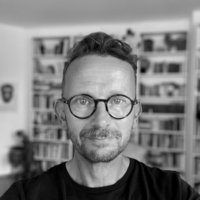
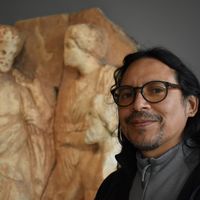



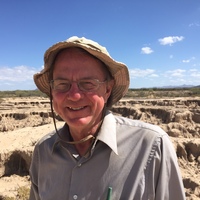
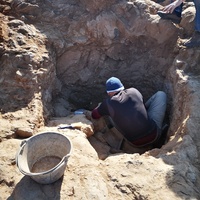

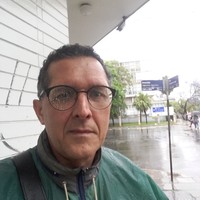

Uploads
Papers by Paola Gonzalez
Key Words: Chilean Diaguita Culture, Funeral rituality, Symmetrical visual art, amerindian shamanic perspectivism, andean animism, El Olivar site, art agency
La excavación de una extensa área funeraria del sitio diaguita El Olivar ha aportado valiosa información acerca de las prácticas mortuorias de una comunidad concreta durante un período de cuatro siglos, aproximadamente. En este artículo se plantea la existencia de una ontología relacional y animista en el ámbito de la muerte, muy cercana al perspectivismo chamánico descrito por Viveiros de Castro para pueblos amazónicos. A partir de las relaciones observadas en los entierros entre personas, animales y objetos, postulamos que las fronteras ontológicas entre ellos se difuminan. Esta investigación también contribuye a la contextualización del arte simétrico, específicamente respecto del rol clave que esta expresión artística desempeñó en la construcción de la identidad diaguita. Palabras clave: cultura Diaguita chilena, ritualidad funeraria, arte visual simétrico, perspectivismo chamánico amerindio, agencia del arte.
morphotypes and investigate their social status and possible functions. Osteological and dental features allowed us to identify them as dogs (Canis lupus familiaris). Three radiocarbon dates gave pre-Inca ages (801 ± 19, 932 ± 21 and 789 ± 20 years 14C BP), associated with contexts of the Late Intermediate or Diaguita Period. These new records expand the pre-Hispanic distribution of the species, previously limited to the Arid North and the extreme south of the country. They were medium or medium-small in size, their approximate body weight and height at
the withers were 13–14 kg and 48 cm respectively, and they were probably mesocephalic. At least three of the dogs were buried individually in a sector devoted to human burials, one with funerary offerings similar to those found with humans. These characteristics suggest that the dogs buried here were companion animals, with clear social recognition. Evidence was also recorded suggesting that one might have been killed intentionally
Key Words: Chilean Diaguita Culture, Funeral rituality, Symmetrical visual art, amerindian shamanic perspectivism, andean animism, El Olivar site, art agency
La excavación de una extensa área funeraria del sitio diaguita El Olivar ha aportado valiosa información acerca de las prácticas mortuorias de una comunidad concreta durante un período de cuatro siglos, aproximadamente. En este artículo se plantea la existencia de una ontología relacional y animista en el ámbito de la muerte, muy cercana al perspectivismo chamánico descrito por Viveiros de Castro para pueblos amazónicos. A partir de las relaciones observadas en los entierros entre personas, animales y objetos, postulamos que las fronteras ontológicas entre ellos se difuminan. Esta investigación también contribuye a la contextualización del arte simétrico, específicamente respecto del rol clave que esta expresión artística desempeñó en la construcción de la identidad diaguita. Palabras clave: cultura Diaguita chilena, ritualidad funeraria, arte visual simétrico, perspectivismo chamánico amerindio, agencia del arte.
morphotypes and investigate their social status and possible functions. Osteological and dental features allowed us to identify them as dogs (Canis lupus familiaris). Three radiocarbon dates gave pre-Inca ages (801 ± 19, 932 ± 21 and 789 ± 20 years 14C BP), associated with contexts of the Late Intermediate or Diaguita Period. These new records expand the pre-Hispanic distribution of the species, previously limited to the Arid North and the extreme south of the country. They were medium or medium-small in size, their approximate body weight and height at
the withers were 13–14 kg and 48 cm respectively, and they were probably mesocephalic. At least three of the dogs were buried individually in a sector devoted to human burials, one with funerary offerings similar to those found with humans. These characteristics suggest that the dogs buried here were companion animals, with clear social recognition. Evidence was also recorded suggesting that one might have been killed intentionally